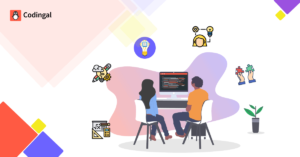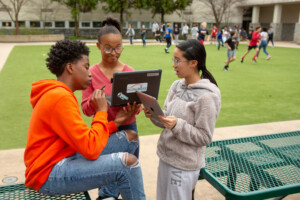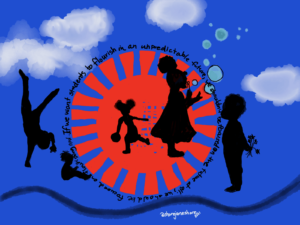Q & A with Jon Schwartz of Kids Like Blogs
Jon Schwartz is an elementary school teacher and runs the site Kids Like Blogs! He believes that blogs motivate students to write, read, create art, and the use of technology. See the Q & A with Jon and be sure to see the work that his students are producing.
—
Q: There are many ways to incorporate technology in the classroom. What made you decide to have the children begin to blog?
A: There were several factors. One, I always had my students write a lot, whether I am teaching first or fifth grade. What happens is they end up with a huge amount of work, and I was never satisfied with how it just went in a folder at school, a binder, their desk, or got sent home. I wanted to be able to keep an efficient record of their work that could easily be referenced and shared with others. For example, they may not have written a lot in the previous year, and when their prior teachers want to see how much they have grown, with a blog, you send them a url, rather than sending over a bunch of papers (which they already have stacks of). By either having the students type on a blog, or have them write on paper and then scanning their handwritten work and art and posting it on the blog as a jpeg, you basically have an online gallery and portfolio. This can be shared with the principal who can then look it over quickly and give a quick high five to the kid as they pass in the halls.
One of the biggest advantages is that by creating an online portfolio, you are in effect creating virtual office hours. With class sizes in some cases doubling (I had a 4/5 combo class this year with 39 kids nearly equally split between 4th and 5th grade), you can imagine there is very little opportunity for one on one conferences, the time when you can give input to children on their work.
Now, if I have a kid who has a blog, I get an immediate email update when they post. So I can be sitting eating a burrito after the gym, and I am in the restaurant reading a magazine and my mobile device vibrates. One of the kids just posted. I have the opportunity to read it and even post a “glow and grow” comment right there- tell them a couple of things they did well, and a couple of things they can edit and improve.
In fact, the kids follow each other’s blogs and once I started modeling these glow and grows, they started commenting on each other’s posts in the same way. All comments go through me as I am the moderator.
Another main reason I started kids blogging is that it is a great way for a student to have an independent special project. If I have a GATE student, I can assign them a writing project or art project, or even a research project, and they can work on it, continually updating their blog with new material, and this all accumulates online. There is an easily accessible record of their work that their parents and teachers and peers can see. If they go to a new school they can share this with their new teachers. I can look over their work and make periodic comments, and there is a record of all of my comments and the student’s response to them. Then if there is a meeting about the child, the work can be shared on the LCD projector.
Finally, I am a writer and professional photographer. Even though I get paid to write and shoot for magazines, I get a bigger thrill out of blogging because I can get feedback from my audience, and I can keep track of how many page views I get, what posts got the most hits, where my readers live, and even monetize my blog (a future possibility for them when they become adults). When I showed the kids how to check their stats and they saw that they were getting the occasional ( if random) hits from faraway lands, they were ecstatic. They realizes that their work is “out there” and that others can look at it from all over the world. Of course since they reveal no identifying information, the names of the blogs are generic, and the content is not unique as far as search engines are concerned, even though the blogs are technically available to anyone, you’d really have no chance of finding them because of the way SEO works, and even if you did, you wouldn’t know who the author is, or have any way of contacting them, and I am in the loop the whole time as well monitoring things.
Q: Was it difficult to encourage the students to blog or was it second nature for them?
A: It was second nature, because I set the tone for the content, which is that as long as it is rated G and doesn’t reveal any personal information or images, they can have at it. They feel free to explore their muse, and we had already opened the creative spigot, if you will, anyway. Once they saw the benefits it caught on like wildfire, and I had to slow it down so that I got personal handwritten notes requesting blogs from each parent, even if they were in Spanish, as you can see here http://www.kidslikeblogs.org/parent_involvement_blogs.html and particularly here http://teacherweb.com/CA/Garrison/Schwartz/parent.blog.requests.2.pdf
Q: How will these virtual portfolios help the students in the future?
A: On the whole, it’s about being able to share work online, and be aware of how information gets transferred online. They will be familiar with how a lot of college work- reading, submission, comments- is done online, they are aware of how to scan their work, do photoshop, they know what SEO is and how to use keywords, they know that if they are a blogger in the future they can use unique content to get hits, they understand the evolution from print to web, they understand the value of learning programming skills for jobs, how to pitch stories, how to credit text and image sources ( digital citizenship). They understand public relations, and that the content they see on the web is not there necessarilly as a function of how important it is, but that the websites have decided to use it as a way to lure more visitors which euqls more hits which equals more banner ads and advertising revenue.
They understand statistics and how charts and graphs can be used meaningfully to convey information ( by looking at their stats page), they understand PageRank, they understand the value of backlinks and how to trade content for backlinks. They understand copyright protection, plagiarism, internet safety. They understand that by being able to publish their own work, they are living at a unique historical time. They even understand that the internet can affect the way countries behave and how it can influence political movements. For example, we examined how quickly blogs and tweets influenced the Arab Spring. Compare that to the American Revolotion where the information tooks much longer to be shared, etc.
Finally, they understand that their work can connect them to the rest of the world. Two sdudents moved to mexico, but they kept blogging, and some of my students continued to follow their blogs and post meaningful editorial comments.
Q: Do you think that blogging has created a cohesive culture in the classroom?
A: They read each other’s posts even on the weekends and comment on them with suggestions for improvement, and in a great many other ways prove this to be true. I have spent a lot of time training their parents- sometimes even their Spanish-speaking only parents- to use the internet and blogs. So it has gone beyond the classroom, to their parents, the school, and even to their peers who have moved to other countries.
Q: Is it safe to set students up with blogs?
A: Only if it is done with care and caution and training by a person that is very familiar with how the internet, websites, and blogs work, and who has experience teaching and training children. I train the parents and the students in internet safety and protocol, and I monitor and moderate the children’s posts. If someone finds the student’s blog, they will not be able to contact the student, and the student’s blog reveals no identifying information or images. My two eldest daughters (10 and 12) have blogs. If the student posts anything that isn’t rated G or doesn’t conform to the internet safety guidelines I have established in my class, their blog will be discontinued and deleted.
Q: Do you set up all of your students with blogs?
A: No. I only do it when parents request it, and even then, I don’t always set it up.The student-parent-teacher relationship must meet certain requirements. If a student isn’t sufficiently responsible and I cannot trust that they will benefit from it, I tell them that I will be happy to provide them with opportunities to write and create on paper, but not on the internet. Some parents have also not pursued the option.
Q: How are your student’s blogs different from Facebook?
A: Facebook is not for kids. Facebook is for adults who use it to share personal information and photos. That is not how we use blogs. Our student blogs are for displaying student work.
The way I have my students use blogs, they are set up to provide the student with what I call a “virtual workbench” to develop their reading, writing, and art skills. It is a creative writing and student art outlet. Facebook can be a fun tool for adults to share personal information, photos, and short personal tidbits, but it is not where you would typically see people posting stories or essays or scanned artwork. My student’s blogs are all about showing off their stories, essays, and scanned artwork, and they share no personally identifying information or photos.








0 Comments
Leave a Comment
Your email address will not be published. All fields are required.